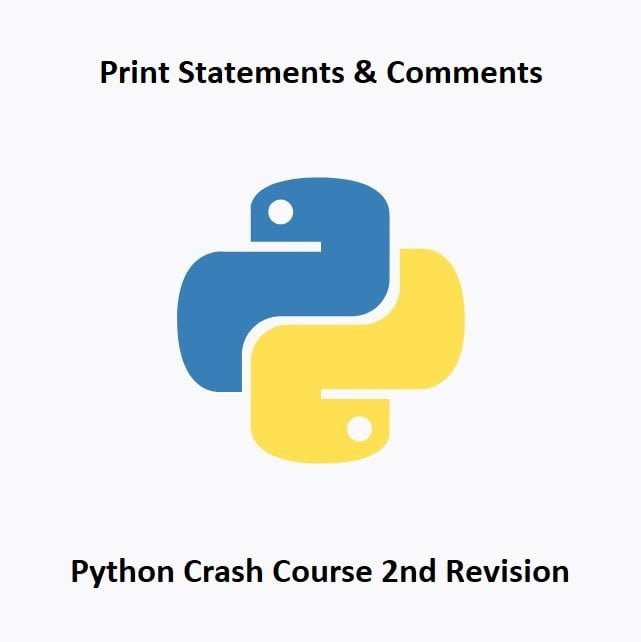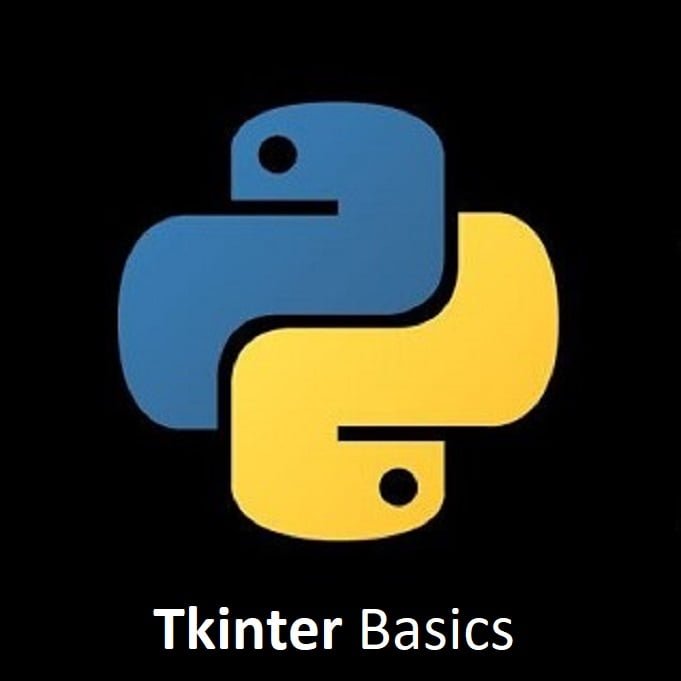How to Encrypt your data with Python
In this guide I will explain all about data encryption, what it is and where it began. Then I will show you some of Pythons Encryption Libraries complete with code examples for various Python encryption methods to help make encrypting and decrypting data very easy to do.
What is Encryption?
Encryption is the process of converting information or data into a code to prevent unauthorized access. It’s a fundamental tool in the field of information security and privacy. Encryption ensures that only authorized parties can access and understand the data, while others are prevented from viewing or comprehending it.
Here are some key points about encryption:
Encryption Algorithms:
Encryption uses mathematical algorithms to transform plaintext data into ciphertext. These algorithms are designed to be computationally complex, making it difficult for unauthorized individuals to decrypt the data without the proper key.
Key:
A key is a crucial component in encryption. It is a piece of information used to both encrypt and decrypt the data. Without the correct key, it’s extremely challenging to decrypt the ciphertext and access the original information.
Types of Encryptions:
- Symmetric Encryption: In symmetric encryption, the same key is used for both encryption and decryption. This means that both the sender and receiver must have the same key.
- Asymmetric Encryption: Asymmetric encryption, also known as public-key cryptography, uses a pair of keys: a public key and a private key. The public key is used to encrypt data, while the private key is used for decryption. This method is particularly useful for secure communication over open networks.
Use Cases:
- Data Security: Encryption is widely used to protect sensitive data, such as personal information, financial data, and medical records, from unauthorized access.
- Secure Communication: It’s used for secure email communication, web browsing (HTTPS), and messaging services to ensure that messages and data are not intercepted and read by eavesdroppers.
- Data Storage: Encrypted storage devices and file encryption tools are used to protect data at rest.
End-to-End Encryption:
This is a method where data is encrypted on the sender’s device and decrypted only on the recipient’s device. It ensures that even the service provider cannot access the content of the communication.
Challenges:
While encryption is a powerful tool for security, it’s not without challenges. For example, law enforcement agencies often raise concerns about encryption hindering their ability to investigate criminal activities. Balancing security and privacy are an ongoing debate in this context.
Encryption Standards:
There are various encryption standards and protocols, such as AES (Advanced Encryption Standard), RSA, and ECC (Elliptic Curve Cryptography), which define the algorithms and methods used for encryption.
History of Encryption
Encryption has a long and fascinating history that spans many centuries. Here’s a brief overview of the history of encryption:
Ancient Civilizations:
The origins of encryption can be traced back to ancient civilizations. The earliest known form of encryption is the Caesar cipher, used by Julius Caesar to protect his military messages. In this method, each letter in the plaintext is shifted a certain number of places down or up the alphabet.
The Middle Ages:
During the Middle Ages, encryption methods became more sophisticated. One notable method was the Vigenère cipher, which used a keyword to determine the shifting pattern for each letter. This made the encryption more complex and resistant to simple decryption methods.
Rise of Cryptanalysis:
With the increasing use of encryption, the field of cryptanalysis, the study of breaking codes and ciphers, also developed. One of the most famous cryptanalysts in history is Al-Kindi, an Arab scholar who wrote a book on cryptography in the 9th century.
World War I and World War II:
Encryption played a significant role in both World War I and World War II. The German Enigma machine is one of the most famous examples. The efforts of Allied cryptanalysts, including Alan Turing, in breaking the Enigma code were crucial to the outcome of the war.
Modern Cryptography:
The development of modern cryptography is closely tied to advances in mathematics and computer science. The invention of the computer in the mid-20th century led to the development of more complex encryption algorithms. Public-key cryptography, which allows for secure communication over untrusted networks, was a major breakthrough in the 1970s with the invention of the RSA algorithm by Ron Rivest, Adi Shamir, and Leonard Adleman.
Standardization and Global Encryption:
The need for secure data transmission over the internet led to the establishment of encryption standards and protocols. The Data Encryption Standard (DES) and its successor, the Advanced Encryption Standard (AES), are widely used symmetric encryption algorithms. The development of the SSL/TLS protocol for secure web communication and the widespread adoption of HTTPS has furthered the use of encryption in everyday online activities.
Contemporary Encryption:
In the modern era, encryption is a fundamental component of digital security. It’s used for everything from securing online transactions to protecting personal data on smartphones. Strong encryption is essential to ensure the privacy and security of digital communications and data.
Encryption has evolved significantly over the centuries, with advances in technology and mathematics continually pushing the boundaries of what can be achieved in terms of securing information and communications. Today, encryption is a cornerstone of cybersecurity and privacy in the digital age.
Encryption with Python
Python offers a variety of encryption methods and libraries that allow you to secure data through encryption and decryption. Below are some of Python’s Encryption libraries complete with code examples:
Fernet:
- Fernet is a symmetric encryption method that is part of the
cryptographylibrary. - It is designed for ease of use and provides a simple way to encrypt and decrypt data with a shared key.
Cryptography Library:
- The
cryptographylibrary is a widely used library for implementing cryptographic operations in Python. - It provides high-level abstractions for various encryption algorithms and best practices for secure cryptography.
- Supports symmetric and asymmetric encryption, hashing, digital signatures, and more.
- Example: Using
cryptographyfor symmetric encryption with the Fernet symmetric key encryption method:
from cryptography.fernet import Fernet key = Fernet.generate_key() f = Fernet(key) plaintext = "Secret message".encode() ciphertext = f.encrypt(plaintext) decrypted_message = f.decrypt(ciphertext).decode()
PyCryptodome:
- The
PyCryptodomelibrary is a self-contained Python package of low-level cryptographic primitives. - It supports a wide range of cryptographic operations, including symmetric and asymmetric encryption, hashing, and more.
- Example: Using
PyCryptodomefor AES encryption:
from Crypto.Cipher import AES from Crypto.Random import get_random_bytes key = get_random_bytes(16) cipher = AES.new(key, AES.MODE_EAX) plaintext = "Secret message".encode() ciphertext, tag = cipher.encrypt_and_digest(plaintext)
RSA (cryptography library or PyCryptodome):
- Both the
cryptographylibrary andPyCryptodomesupport RSA encryption and digital signatures. - RSA is an asymmetric encryption algorithm that uses a public-private key pair.
- Example: Using
cryptographyfor RSA encryption:
from cryptography.hazmat.primitives.asymmetric import rsa
from cryptography.hazmat.primitives import serialization
private_key = rsa.generate_private_key(
public_exponent=65537,
key_size=2048,
)
public_key = private_key.public_key()
plaintext = "Secret message".encode()
ciphertext = public_key.encrypt(plaintext, padding.OAEP(
mgf=padding.MGF1(algorithm=hashes.SHA256()),
algorithm=hashes.SHA256(),
label=None
))
Hashing (e.g., hashlib):
- While not encryption, hashing is essential for securely storing passwords and data integrity checks.
- Python’s
hashliblibrary provides various hash functions like SHA-256 and MD5. - Example: Using
hashlibfor password hashing:
import hashlib
password = "secure_password".encode()
salt = os.urandom(16)
# Hash the password with a salt and store both the salt and hash
hashed_password = hashlib.pbkdf2_hmac('sha256', password, salt, 100000)
Remember that encryption should be used carefully, and you must follow best practices to ensure the security of your data. The choice of encryption method and key management is crucial in any cryptographic implementation.
Conclusion
In the world of digital security, the importance of encryption cannot be overstated. Python provides a range of powerful tools and libraries to help developers implement robust encryption methods, ensuring the confidentiality and integrity of data. From high-level libraries like cryptography, which abstract complex cryptographic operations into easy-to-use functions, to low-level packages such as PyCryptodome, which offer fine-grained control over cryptographic primitives, Python accommodates a wide spectrum of cryptographic needs.
Whether you’re safeguarding sensitive information, securing communication channels, or verifying data integrity, Python’s encryption capabilities have you covered. The examples in this post illustrate how to use different encryption methods, from symmetric encryption like Fernet to asymmetric encryption with RSA, and even hashing for password protection. By understanding and employing these encryption techniques, you’re equipped to protect your data from unauthorized access and tampering.
That’s All Folks!
Find more of our Python guides here: Python Guides
Recommendation:
Big Book of Small Python Programs: 81 Easy Practice Programs: https://amzn.to/3rGZjCR





